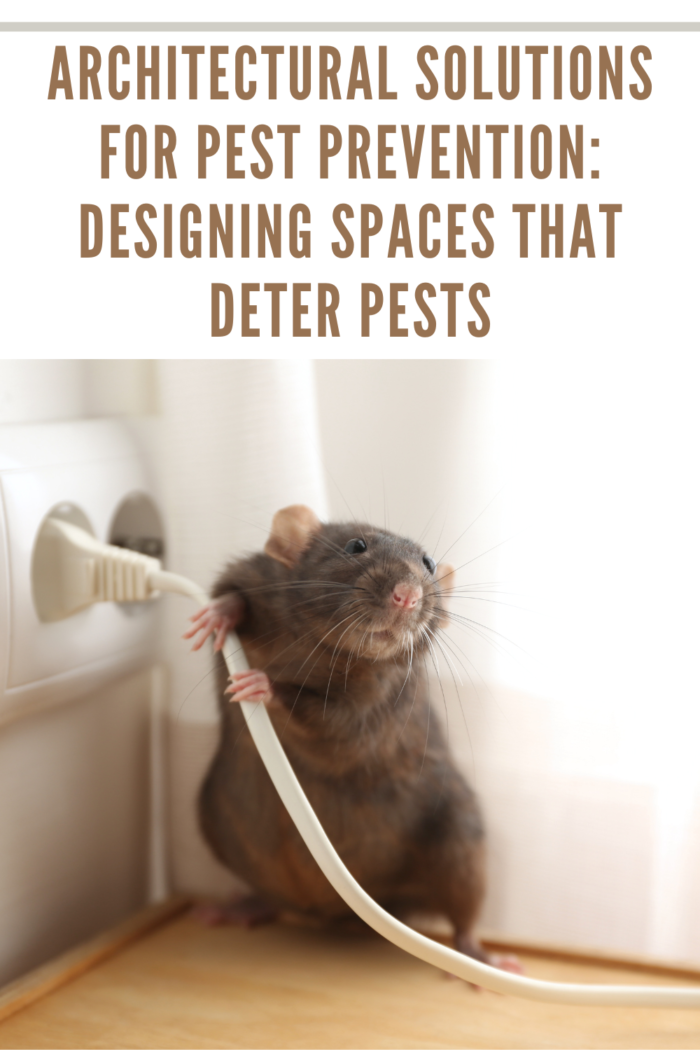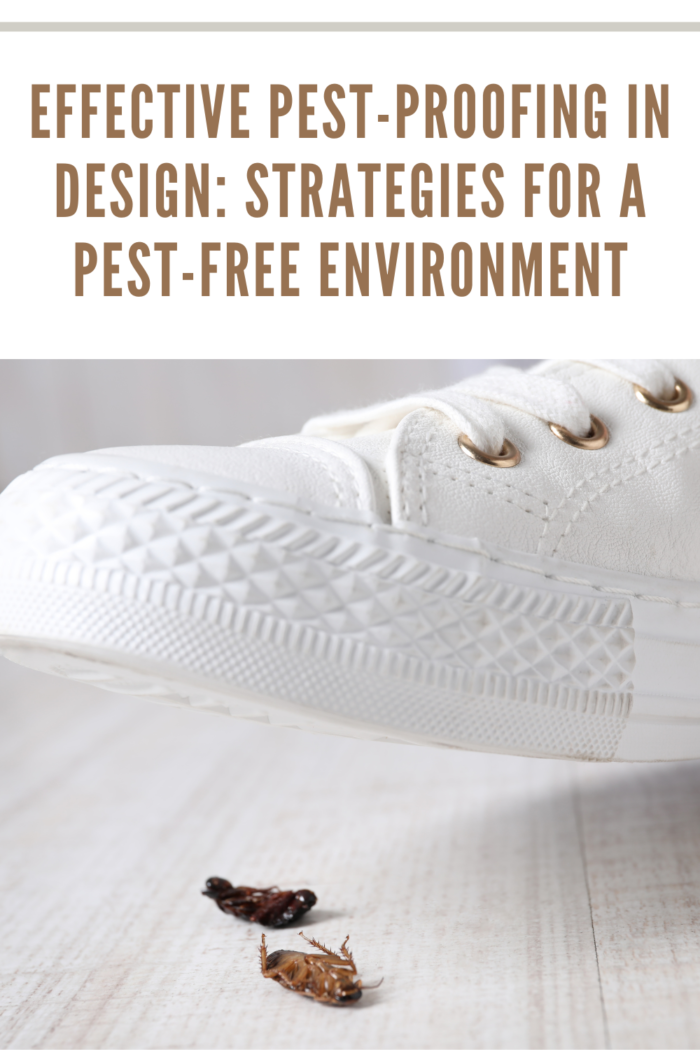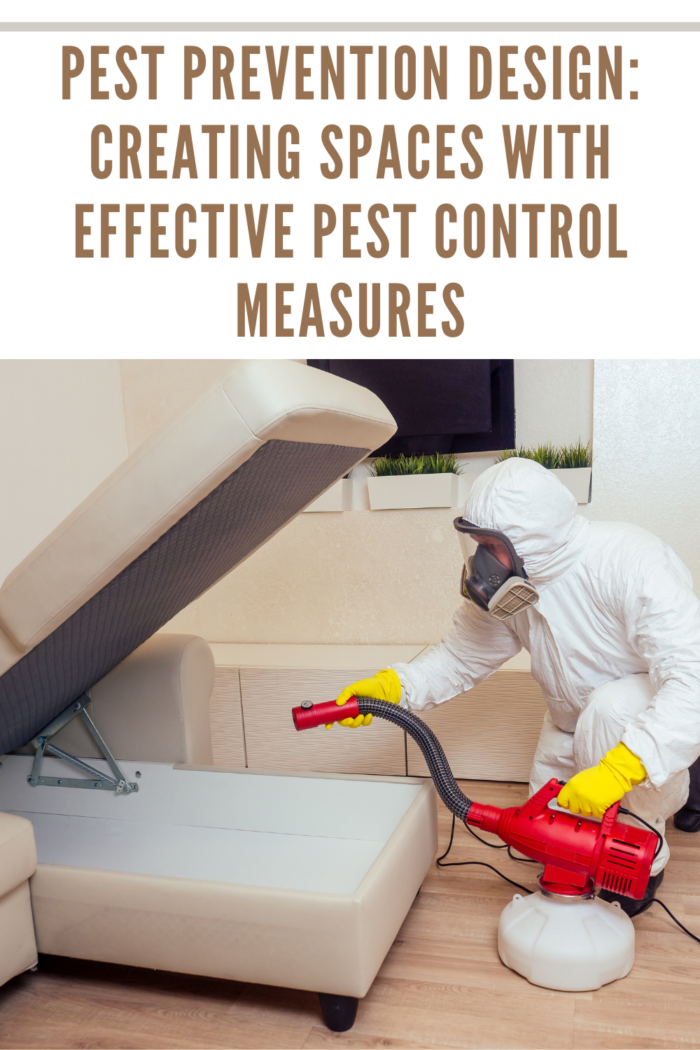Welcome to our guide on Design Principles for Pest Prevention. In this resource, we’ll explore effective strategies to incorporate pest control measures into your designs, creating spaces that are resilient against unwanted intruders.
Animals of all types are biological organisms with specific behavioral preferences needs. All require water, food, entry, and harborage to create a habitat and become pests — the pest prevention tactics listed below aim to minimize pest infestations.

8 General Design Principles for Pest Prevention
Principle #1: Understand The Local Pest Pressures
Engineers, architects, and builders alike must have the necessary information about the local structural species of pests to make the essential choices for designs. Extension services offered by universities or trustworthy pest professionals themselves are promising sources for this kind of knowledge. One significant factor that makes a difference in the distribution of pests is the climate.
Among these are cockroaches, ants, termites, rats, birds, mice, and other species of urban wildlife. For those who are living in warm and humid climates, insect pests are known to be the most bothersome. Because high temperatures hasten the life cycle of an insect, this also increases the population.
Principle #2: Analyze the Physical Context
Aside from the climate, another contributing factor is the physical context of a specific building, requiring crucial design planning. Vegetation, underground facilities, surfaces, and the surrounding structures should all be considered. For example, an apartment constructed in the center of Manhattan has a high risk of rat infestation due to the several connecting subways, tunnels, and sewers underneath the dense city.
Add the practice of piling trash in garbage bags instead of throwing them in dumpsters; then it makes it the perfect habitat for rats and mice. For those instances, possible entries should have individual attention, with architects focusing on completely sealing them shut from the outside.
Similarly, infrastructures built around the perimeter of urban squares are primary targets for pigeons as their roosting places. You can avoid these unwanted infestations by having an architect design semi-enclosed alcoves, flat ledges, and other designs that would dismay pigeons from making it their roosting spot.
Principle #3: Design According to the Pest Tolerance Level
Most of the time, seeing a trail of ants in your home can be quite bothersome, but a single ant inside a surgical ward can lead to fatal consequences. Tolerance varies when it comes to pest infestations, which is why it should always be a priority during the design stage. Healthcare establishments, institutional kitchens, and manufacturing facilities that require optimal sterilization demand a thorough and carefully planned design to prevent any potential pests from penetrating.

Principle #4: Use Quality Pest-Resistant Materials
Choosing the appropriate pest-resistant materials can stop pests from entering a compound or keep them from making the area their haven. Some elements only provide “pest resistance,” while others offer a hundred percent on exclusion. Determining which materials to use based on facts is crucial for engineers, builders, and designers.
Many approaches are also deemed ineffective when it comes to pest control. One example to state is the use of a spray can foam without impervious stainless steel is the least recommended when keeping rodents away from your building. The percentage of the pest resistance of specific materials will also depend on the species.
Principle #5: Design for Quick Inspection
The saying “what you don’t know won’t hurt you” is a philosophy with several flaws, which does not result in effective pest management. Well hidden drains or utility boxes that are rarely used can interfere with your efforts in pest control in places such as institutional kitchens, where they offer potential hiding places for flies, ants, bedbugs, and termites. Having built-in access to narrow areas such as false ceilings, triple wall voids, and false roofs provides a significant advantage for pest control professionals in detecting wood-boring insects or infestation of rodents.
It allows you to save thousands of dollars in replacing wood structures and protecting the well-being of the inhabitants. The inability of early detection will result in high pest control costs due to higher use of tools and equipment, which you can use to splash a bug spray, states Pestwiki. This then leads to a significant impact in terms of health and the environment.

Principle #6: Minimize Moisture
All engineers and architects of competence know that humidity is the key to attracting pests, which is why today’s building codes aim to fulfill this goal. Aside from advancing building decay, humidity also heightens crucial problems with insects such as termites, beetles, flies, cockroaches, silverfish, and carpenter ants. Excessive humidity also promotes mold contamination inside buildings, some of which can lead to holes in your pockets. Fortunately, several procedures aim to minimize building moisture. Namely, proper ventilation of crawl spaces, placement of downspout, appropriate guttering, one-piece countertops, humidistats, and correct patio slopes.
Principle #7: Eliminate Potential Harborage
Pests prefer to live in hidden spaces to avoid human or animal disturbance. You can minimize inaccessible areas — false ceilings, air plenums, gaps behind appliances, false bottoms under dressers, and uncapped concrete blocks — to help in pest management. Sometimes, the material itself opens an opportunity for pests, similar to cases where outside foundations are covered with rigid foam insulation — a potential residence for burrowing termites.
Incorporating some of these measures will be simple, while others (such as eliminating air plenums or rigid foam insulation) may directly conflict with other building goals.

Principle #8: Design Unattractive Buildings for Pests
Other than the typical needs of pests — water, food, and potential harborage — what attracts pests to buildings? Poorly designed outside lighting attracts night insects to doorways, hallways, and windows. Shrubs and bushes planted near the foundations of buildings are a watery treat to pests as they provide the ideal concealment and necessary protection from particular elements.
Incorporating the measures mentioned above are simple, while others may conflict with the goals of the building.
